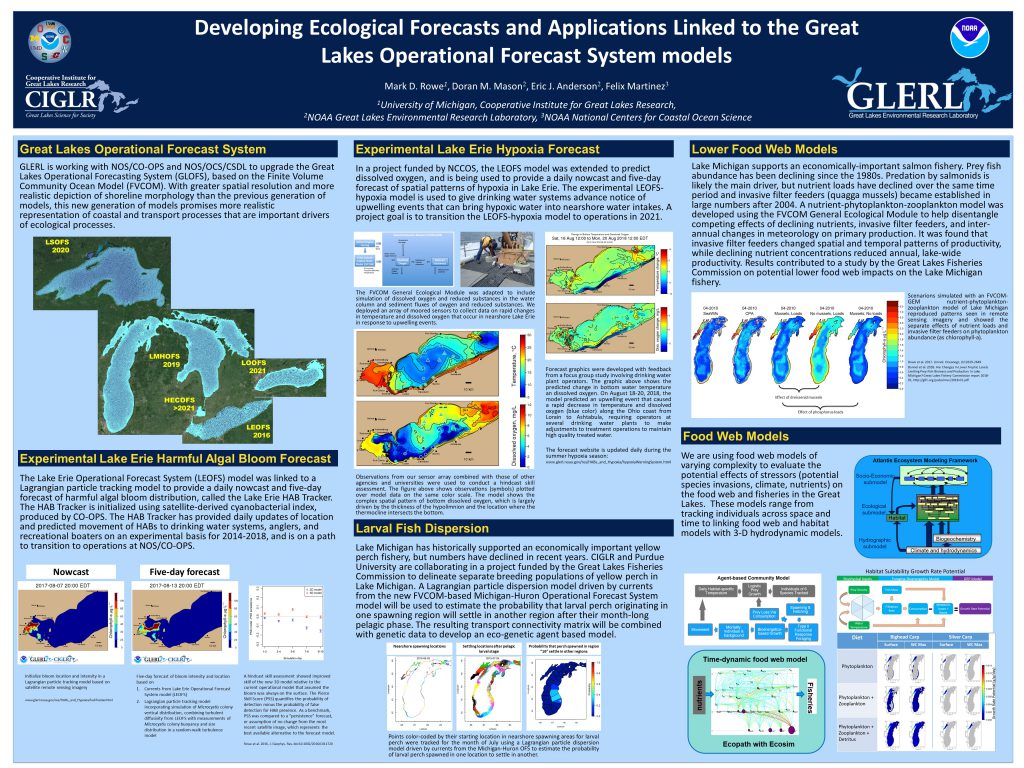NOAA’s first unified General Modeling Meeting and Fair held September 10-12, 2018, at the Center for Weather and Climate Prediction in College Park, MD, featured the modeling and forecasting work of NCCOS scientists and its collaborators.
During the meeting’s plenary presentations, two invited speakers highlighted NCCOS work. Greg Seroka from NOS/Office of Coast Survey overviewed NOS’s modeling efforts mentioning NCCOS research as a prime example of NOS’ contribution to this key part of NOAA’s mission. NCCOS’ Lonnie Gonsalves then overviewed NOAA’s Ecological Forecasting Roadmap, and once again featured NCCOS work as an example of cross-line office collaborative modeling.

To cap NCCOS’ representation, the winner of the Outstanding Exhibition of Unified Modeling Award of the meeting’s second day poster fair featured a joint federal-academic effort to develop models and forecasts responsive to science information needs on Harmful Algal Blooms (HABs) and hypoxia in Lake Erie, two major management issues in the Great Lakes region.
Mark Rowe from the NOAA Collaborative Institute for Great Lakes Research (CIGLR) at the University of Michigan, Doran Mason and Eric Anderson from OAR’s Great Lakes Environmental Research Laboratory (GLERL), and Felix Martinez from the NCCOS/Competitive Research Program co-authored the poster, titled Developing ecological forecasts and applications linked to the Great Lakes Operational Forecast System models. The work presented credits a long-term collaboration between NCCOS, GLERL, CIGLR, and other academic and private entity researchers working closely with agency manager, policy makers, key stakeholders to provide critical forecasts of the timing, size, and extent of HABs events and the hypoxic zone in Lake Erie.
These forecasts provide valuable information used in determining beach closures and helping water plant managers prepare for potential draw in of HABs’ toxins or hypoxic water into their water treatment systems.
For more information on the meeting, contact Felix Martinez (felix.martinez@noaa.gov) or Lonnie Gonsalves (lonnie.gonsalves@noaa.gov).
